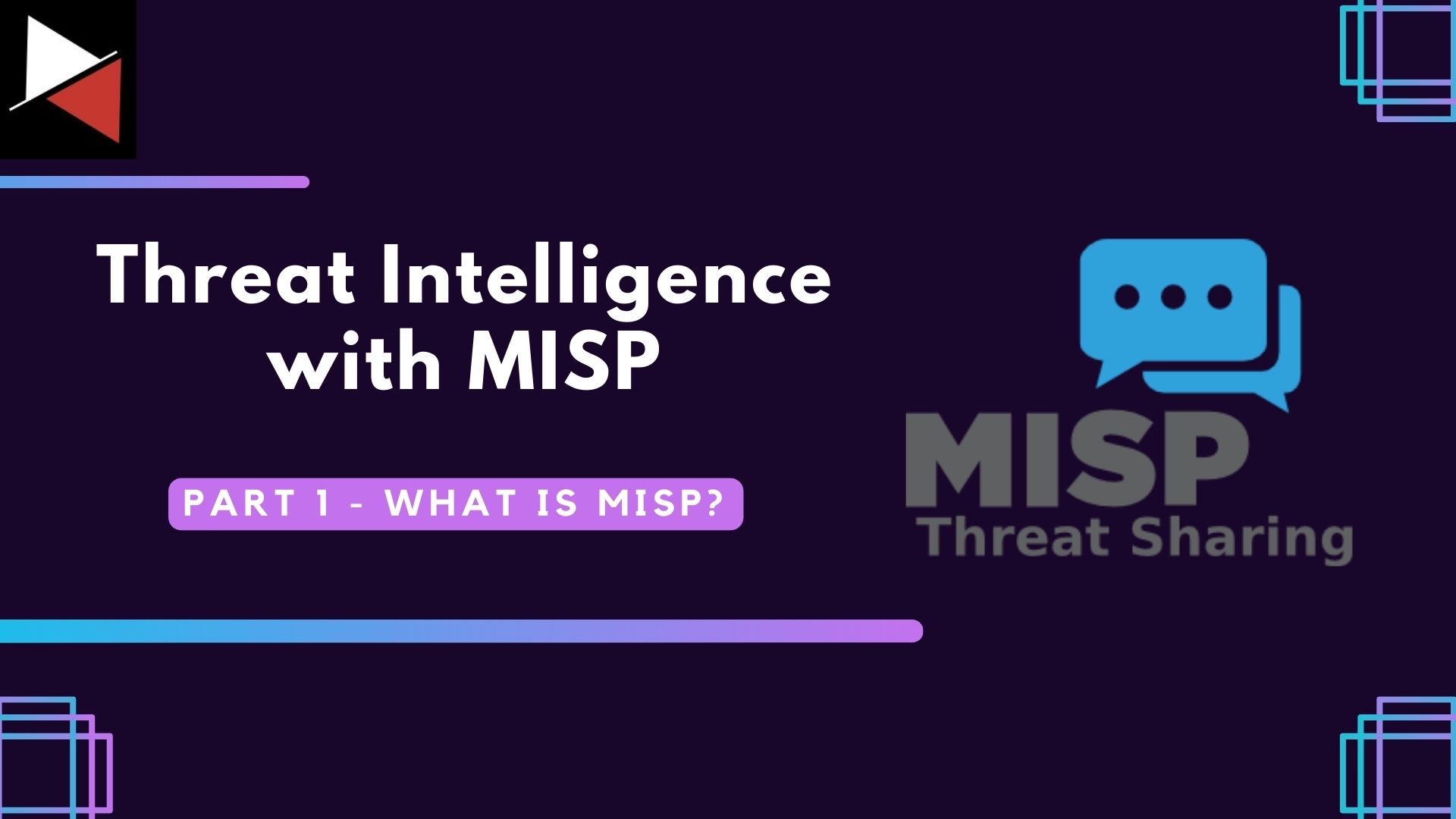Cyber threat intelligence (CTI) is the art of gathering, analyzing, and understanding information about cyber security threats. It involves collecting data, transforming it into actionable intelligence, and distributing it to key stakeholders to improve your organization’s security posture.
To do this effectively, you need a platform to store and analyze the intelligence you collect. You could choose anything from a simple Excel spreadsheet to a custom-made SQL database with a web GUI. However, the defacto solution in the world of CTI is MISP, an open-source threat intelligence platform designed for ingesting, analyzing, and sharing intelligence.
This article describes MISP, its key features and capabilities, and how it is used by threat intelligence analysts, security researchers, and incident responders. It also details resources where you can learn how to use the platform. That said, this is just the first installment in a series of how to get up and running with MISP. Read on to discover what you will learn by following this series.
Let’s start by learning what MISP is and how it could benefit you.
Overview
MISP (Malware Information Sharing Platform and Threat Sharing) is an open-source threat intelligence platform that allows you to share, collate, analyze, and distribute threat intelligence. It is used by finance, healthcare, telecommunications, government, and technology organizations to share and analyze information about the latest threats. Security researchers, threat intelligence teams, incident responders, and the wider cyber security community all use MISP to collaborate in their defensive efforts.
The platform provides a structured and standardized framework for collecting, storing, and sharing threat intelligence data, enabling collaboration and enhanced defense against cyber threats. It has mappings with existing threat intelligence frameworks (e.g., MITRE ATT&CK, CAPEC, etc.) and strong integrations with security products (e.g., CrowdStrike Falcon, Intel471, etc.). MISP is the defacto open-source threat intelligence platform mature organizations use to track threats and collaborate.
Key Features and Capabilities
MISP boasts a range of features to aid in collecting, analyzing, and distributing threat intelligence. These include:
- Data Ingestion: You can import and aggregate threat intelligence data into MISP from various sources, including open-source feeds, proprietary feeds, internal data, and manual input.
- Data Structuring: The platform uses a structured data model to classify and organize threat intelligence information using Events, Attributes (IOCs), and Objects (attack patterns, malware characteristics, and more).
- Information Sharing: You can automatically or manually share threat intelligence with trusted partners, peer organizations, and information-sharing communities to collaborate in your detection and mitigation efforts.
- Taxonomies: MISP incorporates standardized taxonomies and classification systems, including the Common Attack Pattern Enumeration and Classification (CAPEC), Common Vulnerability Enumeration (CVE), and the MITRE ATT&CK matrix for consistency in your threat intelligence.
- Data Enrichment: You can enrich your threat intelligence from inside the MISP platform by adding contextual information, including threat actor profiles, mitigation strategies, and references to relevant reports and indicators.
- Customization: You can customize your MISP instance to suit their specific needs.
- Integration: MISP offers pre-built integrations with various security tools and platforms. You can use these integrations to automate your threat intelligence’s ingestion, enrichment, and distribution.
- Analysis and Correlation: MISP uses a correlation engine that automatically analyzes and correlates related threat intelligence so you can quickly identify patterns, trends, and potential threats to your organization.
- Alerting and Reporting: MISP provides alerting mechanisms to notify you of specific threat intelligence events or indicators. You can also automatically generate and export reports to share your findings with others.
- API Access: You can use MISP’s RESTful API and associated Python module to programmatically access its functionalities and easily integrate with other security tools and systems.
Use Cases
Now you know what MISP is, let’s look at how it is commonly used by cyber threat intelligence analysts, security researchers, and incident responders in their day-to-day work.
Use Case #1: Cyber Threat Intelligence Analysts
Threat intelligence analysts use MISP to collect, analyze, and share information about cyber threats. MISP serves as a central repository for collecting and sharing intelligence across organizations and industries. Analysts will gather threat intelligence manually or automatically using MISP’s ingestion capabilities and then analyze this data.
To help analyze data, MISP provides enrichment integrations to provide additional context to events automatically. For instance, according to popular CTI vendors, is a domain name malicious, is an IP address originating from a certain country, or has a file’s hash been seen in a malware sandbox before? All this information helps an analyst determine if an IOC is malicious and provides additional data they can investigate further by pivoting.
Once an analyst is finished analyzing, they can distribute this information to key stakeholders using MISP’s advanced sharing features:
- IOCs can be pushed to security solutions to be blocked.
- Reports can be generated and shared with executives.
- MISP events can be automatically shared with the wider cyber security community.
Use Case #2: Security Researchers
Security researchers will use MISP to collect and share information about the latest vulnerabilities, exploits, and threats across the cyber landscape. They will collect what is being shared to aid in their research and share their research with the community so organizations can protect themselves from attacks.
MISP’s integrations and support for CTI taxonomies/frameworks (MITRE ATT&CK, CVE, CAPEC, etc.) allow researchers to use a common language when describing and classifying threats. For instance, a researcher may investigate a new form of malware and list all the IOCs they found, the MITRE ATT&CK techniques the malware used, and the CVEs the malware exploited. Once shared with the wider community, an organization can use this information to block the IOCs, write detections for specific MITRE ATT&CK techniques, and prioritize the patching of certain CVEs.
Use Case #3: Incident Responders
Incident responders will use MISP to share information about incidents they have experienced or are currently trying to resolve. By sharing this information, a collective effort can be geared towards combating a new threat actor, malware strain, phishing campaign, or any other cyber threat.
MISP’s correlation engine is ideal for sharing incident data as it allows responders to quickly see incidents that may be related to what they are experiencing. They can then search for specific artifacts or block certain IOCs seen in similar incidents to minimize the impact of their incident.
Check out MISP User Stories in the official MISP documentation for more use cases. This details how others have used the platform to meet their threat intelligence needs.
Learning Resources
There are several ways you can learn how to use the MISP platform:
- The online documentation: A convenient way to learn the ins and outs of MISP.
- The offline documentation: PowerPoint slides that provide a more in-depth guide to MISP, useful when used with the official training videos or when teaching MISP to others.
- The official training videos: A practical guide to MISP with demonstrations on key topics, such as daily use for analysts, administration and deployment, and MISP workflows.
- YouTube: This is a great platform for a quick introduction to topics. There are several videos about MISP, from easily digestible descriptions to guides on setting up your own instance.
If you want to get to grips with MISP quickly, follow along with this Threat Intelligence with MISP series.
Threat Intelligence with MISP Series
MISP is a widely used solution in threat intelligence. It’s used by businesses and governments worldwide to collect, analyze, and share intelligence efficiently. This tool can provide tangible benefits to your organization, so it helps to know how to use it effectively.
This series aims to provide you with the knowledge you need to get up and running with MISP as quickly as possible. During this series, you will learn the following:
- How to create and configure your own MISP instance.
- How to automatically ingest data into your MISP instance.
- How to export IOCs from MISP and add them to your security solutions.
- How to enrich data in MISP.
- How to share data with MISP.
- How to add threat intelligence to your MISP instance using various methods.
- How to perform threat profiling using MISP.
- How to use MISP API to perform data analysis.
- How to add Sigma rules to MISP.
- And more!
The series will focus on practical knowledge rather than long theoretical lectures, so If you have a basic understanding of cyber security and an eagerness to learn, you should be able to follow along easily.
The next installment of this series will focus on creating and configuring a base MISP instance for you to play around with. Follow me on Medium to stay up-to-date with this series!
Discover more in the Threat Intelligence with MISP series!




